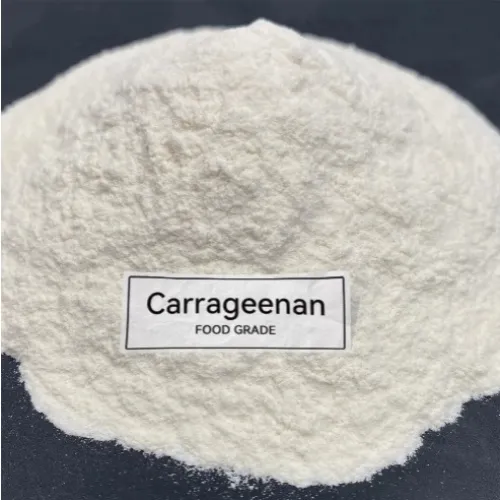Warning: Undefined array key "title" in /home/www/wwwroot/HTML/www.exportstart.com/wp-content/themes/1198/header.php on line 6
Warning: Undefined array key "file" in /home/www/wwwroot/HTML/www.exportstart.com/wp-content/themes/1198/header.php on line 7
Warning: Undefined array key "title" in /home/www/wwwroot/HTML/www.exportstart.com/wp-content/themes/1198/header.php on line 7
Warning: Undefined array key "title" in /home/www/wwwroot/HTML/www.exportstart.com/wp-content/themes/1198/header.php on line 7
- Afrikaans
- Albanian
- Amharic
- Arabic
- Armenian
- Azerbaijani
- Basque
- Belarusian
- Bengali
- Bosnian
- Bulgarian
- Catalan
- Cebuano
- China
- China (Taiwan)
- Corsican
- Croatian
- Czech
- Danish
- Dutch
- English
- Esperanto
- Estonian
- Finnish
- French
- Frisian
- Galician
- Georgian
- German
- Greek
- Gujarati
- Haitian Creole
- hausa
- hawaiian
- Hebrew
- Hindi
- Miao
- Hungarian
- Icelandic
- igbo
- Indonesian
- irish
- Italian
- Japanese
- Javanese
- Kannada
- kazakh
- Khmer
- Rwandese
- Korean
- Kurdish
- Kyrgyz
- Lao
- Latin
- Latvian
- Lithuanian
- Luxembourgish
- Macedonian
- Malgashi
- Malay
- Malayalam
- Maltese
- Maori
- Marathi
- Mongolian
- Myanmar
- Nepali
- Norwegian
- Norwegian
- Occitan
- Pashto
- Persian
- Polish
- Portuguese
- Punjabi
- Romanian
- Russian
- Samoan
- Scottish Gaelic
- Serbian
- Sesotho
- Shona
- Sindhi
- Sinhala
- Slovak
- Slovenian
- Somali
- Spanish
- Sundanese
- Swahili
- Swedish
- Tagalog
- Tajik
- Tamil
- Tatar
- Telugu
- Thai
- Turkish
- Turkmen
- Ukrainian
- Urdu
- Uighur
- Uzbek
- Vietnamese
- Welsh
- Bantu
- Yiddish
- Yoruba
- Zulu
Dec . 11, 2024 10:56 Back to list
Comparative Analysis of Dipropylene Glycol and Propylene Glycol in Industrial Applications
Understanding Dipropylene Glycol and Propylene Glycol Their Properties and Applications
Dipropylene glycol (DPG) and propylene glycol (PG) are both colorless, odorless liquids that belong to the family of glycols. They have garnered significant attention in various industries due to their unique properties and versatility. While they may sound similar, DPG and PG have distinct characteristics, applications, and safety profiles that set them apart.
Chemical Structure and Properties
Propylene glycol (C3H8O2) is a synthetic organic compound, derived from petroleum or a renewable source such as corn. It is a simple alcohol with two hydroxyl (-OH) groups, making it hygroscopic, which means it can absorb moisture from the environment. This property makes PG an effective humectant, and it is widely used in cosmetic formulations, food products, and pharmaceutical formulations.
On the other hand, dipropylene glycol (C6H14O3) is produced through the hydration of propylene oxide. It comprises two propylene glycol units linked together, which imparts it with different physical and chemical properties compared to PG. DPG has a higher molecular weight and boiling point, which makes it less volatile and suitable for various applications that require stability and longevity.
Applications in Various Industries
Both DPG and PG find use across several industries, though their applications often differ.
1. Cosmetics and Personal Care Propylene glycol is a popular ingredient in skincare and cosmetic products such as lotions, creams, and deodorants. Its moisturization properties and ability to enhance the absorption of other ingredients make it a staple in this industry. Dipropylene glycol, while less common in cosmetics, is still utilized as a solvent and carrier for fragrances and essential oils, helping to stabilize these components in formulations.
dipropylene glycol and propylene glycol

2. Food Industry PG is Generally Recognized as Safe (GRAS) by the FDA for use in food products. It acts as a food additive, solvent, and flavor enhancer. It is often found in various food items, including baked goods and confections. DPG is less frequently used in food applications but may be present in some flavoring formulations.
3. Pharmaceuticals Both glycols play crucial roles in the pharmaceutical industry. Propylene glycol is used in numerous medications for its solvent properties, especially in parenteral and topical formulations. Dipropylene glycol can also be employed as a solvent for certain pharmaceuticals, and it may help to modulate the release of active ingredients.
4. Industrial Applications In the industrial realm, PG is used as a de-icing agent and antifreeze, while DPG serves as a plasticizer in the production of plastics, textiles, and resins. Due to its lower volatility, DPG is favored in applications where a stable and long-lasting product is necessary.
Safety and Environmental Considerations
When discussing the safety of these compounds, it is vital to refer to their respective profiles. Propylene glycol is generally regarded as safe for use in food and cosmetics. However, some individuals may experience allergic reactions or skin sensitivities. Dipropylene glycol is also considered safe for various applications, though, like any chemical, it should be handled with care.
From an environmental perspective, both DPG and PG are biodegradable, reducing their potential ecological impact if released into the environment. Nonetheless, responsible usage and disposal practices are essential to minimize any negative outcomes.
Conclusion
Dipropylene glycol and propylene glycol are essential substances with a wide range of applications across diverse industries. Their unique properties make them valuable in skincare, food, pharmaceuticals, and industrial practices. Understanding the distinctions between these two glycols is crucial for manufacturers and consumers alike, ensuring their safe and effective use in everyday products. As industries continue to innovate, the demand for these versatile compounds is likely to grow, further solidifying their roles in modern applications.
Latest news
-
Certifications for Vegetarian and Xanthan Gum Vegetarian
NewsJun.17,2025
-
Sustainability Trends Reshaping the SLES N70 Market
NewsJun.17,2025
-
Propylene Glycol Use in Vaccines: Balancing Function and Perception
NewsJun.17,2025
-
Petroleum Jelly in Skincare: Balancing Benefits and Backlash
NewsJun.17,2025
-
Energy Price Volatility and Ripple Effect on Caprolactam Markets
NewsJun.17,2025
-
Spectroscopic Techniques for Adipic Acid Molecular Weight
NewsJun.17,2025

